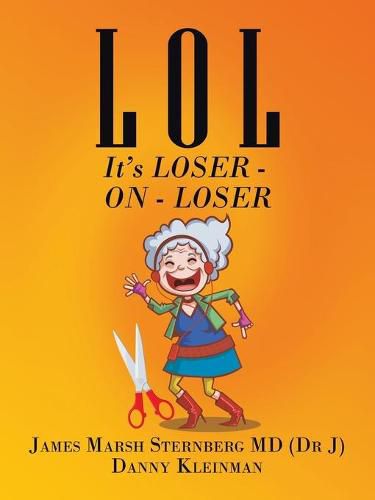Readings Newsletter
Become a Readings Member to make your shopping experience even easier.
Sign in or sign up for free!
You’re not far away from qualifying for FREE standard shipping within Australia
You’ve qualified for FREE standard shipping within Australia
The cart is loading…






This title is printed to order. This book may have been self-published. If so, we cannot guarantee the quality of the content. In the main most books will have gone through the editing process however some may not. We therefore suggest that you be aware of this before ordering this book. If in doubt check either the author or publisher’s details as we are unable to accept any returns unless they are faulty. Please contact us if you have any questions.
Just what is LOL? Yes, a common abbreviation for Laughing Out Loud, and often used to refer to a Little Old Lady, but in bridge it means a Loser-On-Loser play. At times a declarer can improve his/her situation by playing a losing card from one hand on a loser in a different suit from the hand opposite. This occurs when a player has a loser in two suits but can arrange to lose them both on one trick, thereby reducing the number of losers from two to one. Often this looks like a Ruff-and-Sluff play, but instead of ruffing, declarer or dummy discards a loser in each hand. When and why would one do this? This technique has many uses. One example is to keep the 'Danger' hand off lead. Often in the end game it serves as the exit in assisting the process of elimination and placing the lead in the hand of the desired opponent for an endplay. The advantage of this procedure is that declarer divests himself of two losers while simultaneously placing the lead in the desired quarter.
$9.00 standard shipping within Australia
FREE standard shipping within Australia for orders over $100.00
Express & International shipping calculated at checkout
This title is printed to order. This book may have been self-published. If so, we cannot guarantee the quality of the content. In the main most books will have gone through the editing process however some may not. We therefore suggest that you be aware of this before ordering this book. If in doubt check either the author or publisher’s details as we are unable to accept any returns unless they are faulty. Please contact us if you have any questions.
Just what is LOL? Yes, a common abbreviation for Laughing Out Loud, and often used to refer to a Little Old Lady, but in bridge it means a Loser-On-Loser play. At times a declarer can improve his/her situation by playing a losing card from one hand on a loser in a different suit from the hand opposite. This occurs when a player has a loser in two suits but can arrange to lose them both on one trick, thereby reducing the number of losers from two to one. Often this looks like a Ruff-and-Sluff play, but instead of ruffing, declarer or dummy discards a loser in each hand. When and why would one do this? This technique has many uses. One example is to keep the 'Danger' hand off lead. Often in the end game it serves as the exit in assisting the process of elimination and placing the lead in the hand of the desired opponent for an endplay. The advantage of this procedure is that declarer divests himself of two losers while simultaneously placing the lead in the desired quarter.